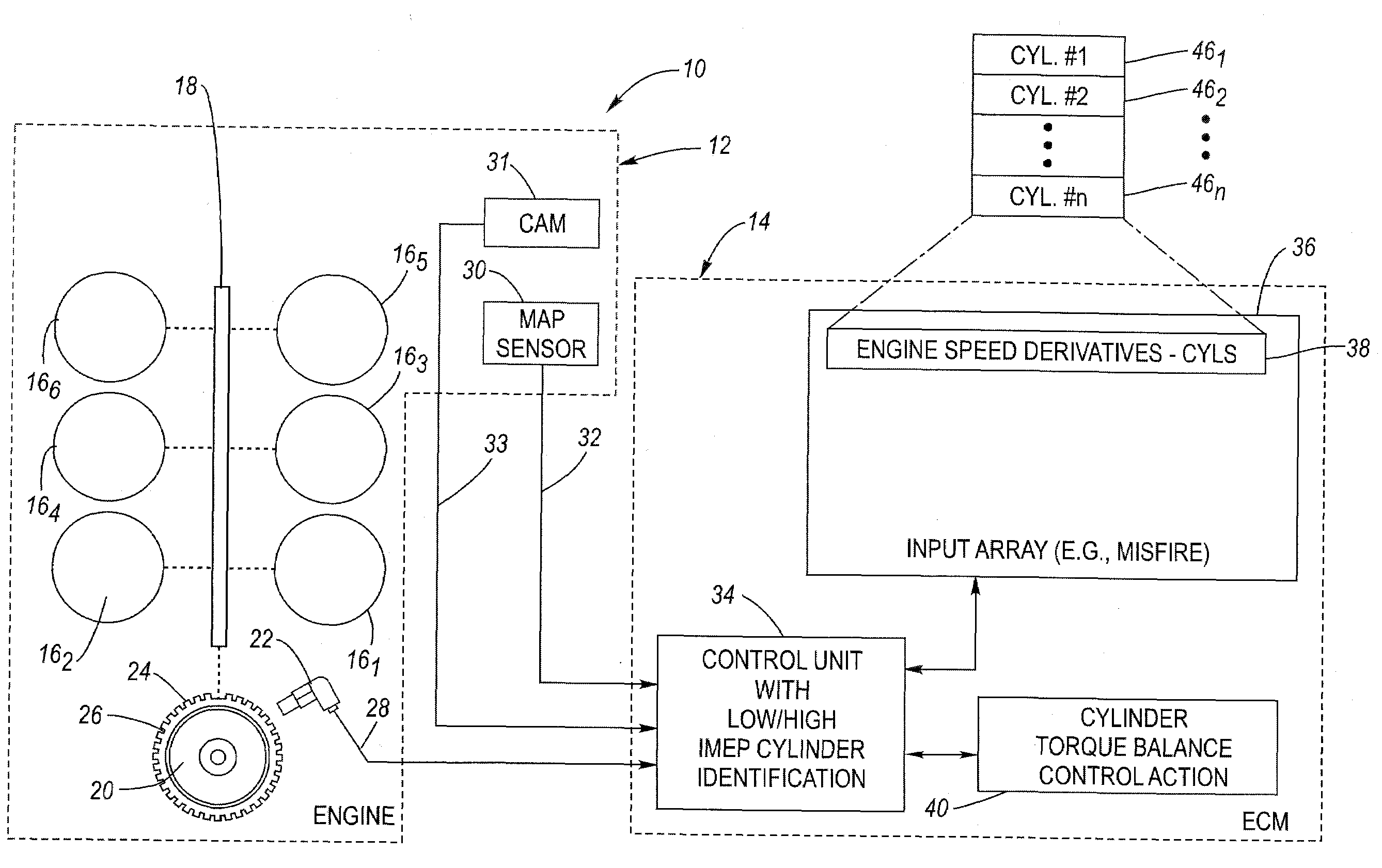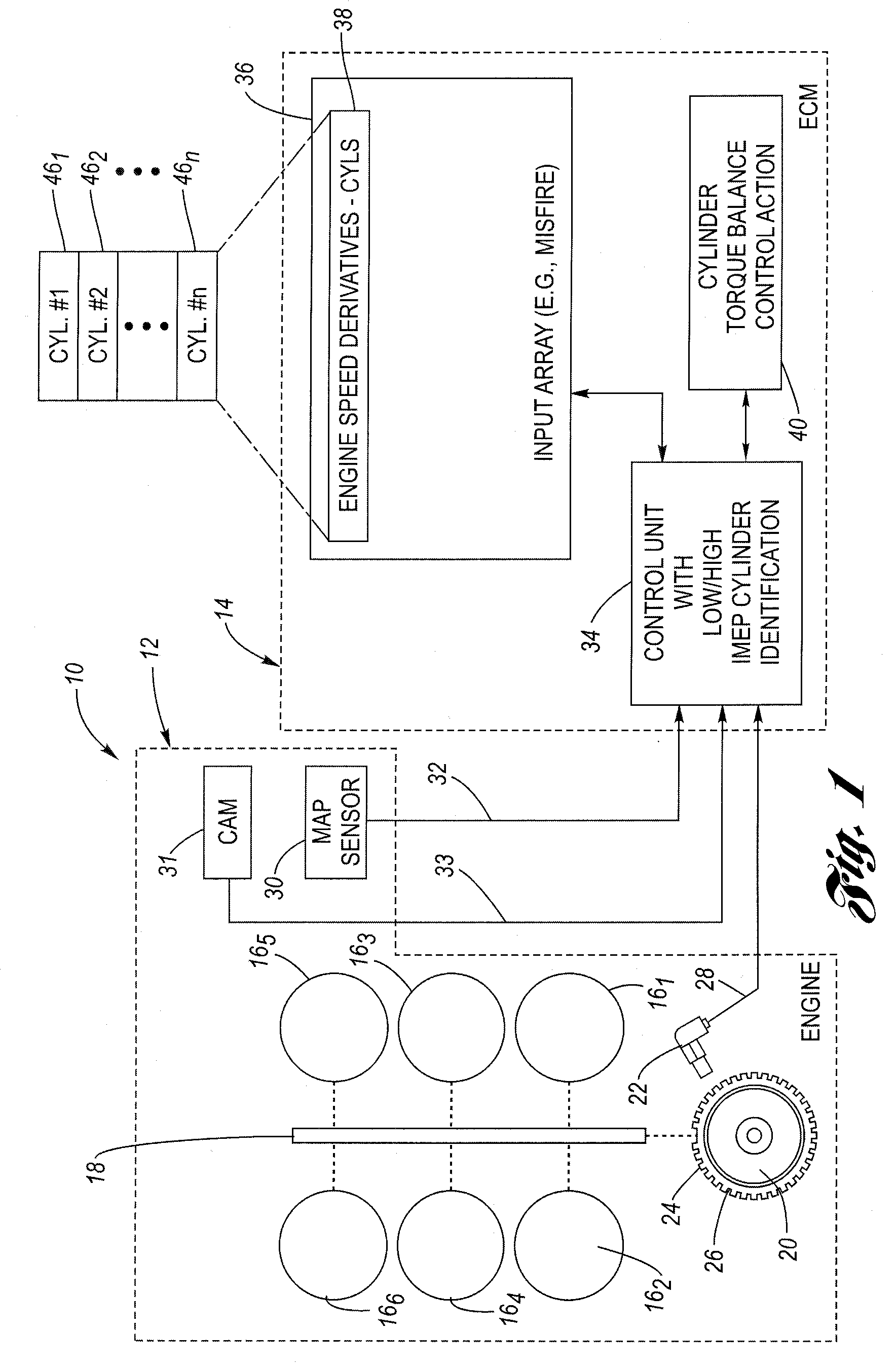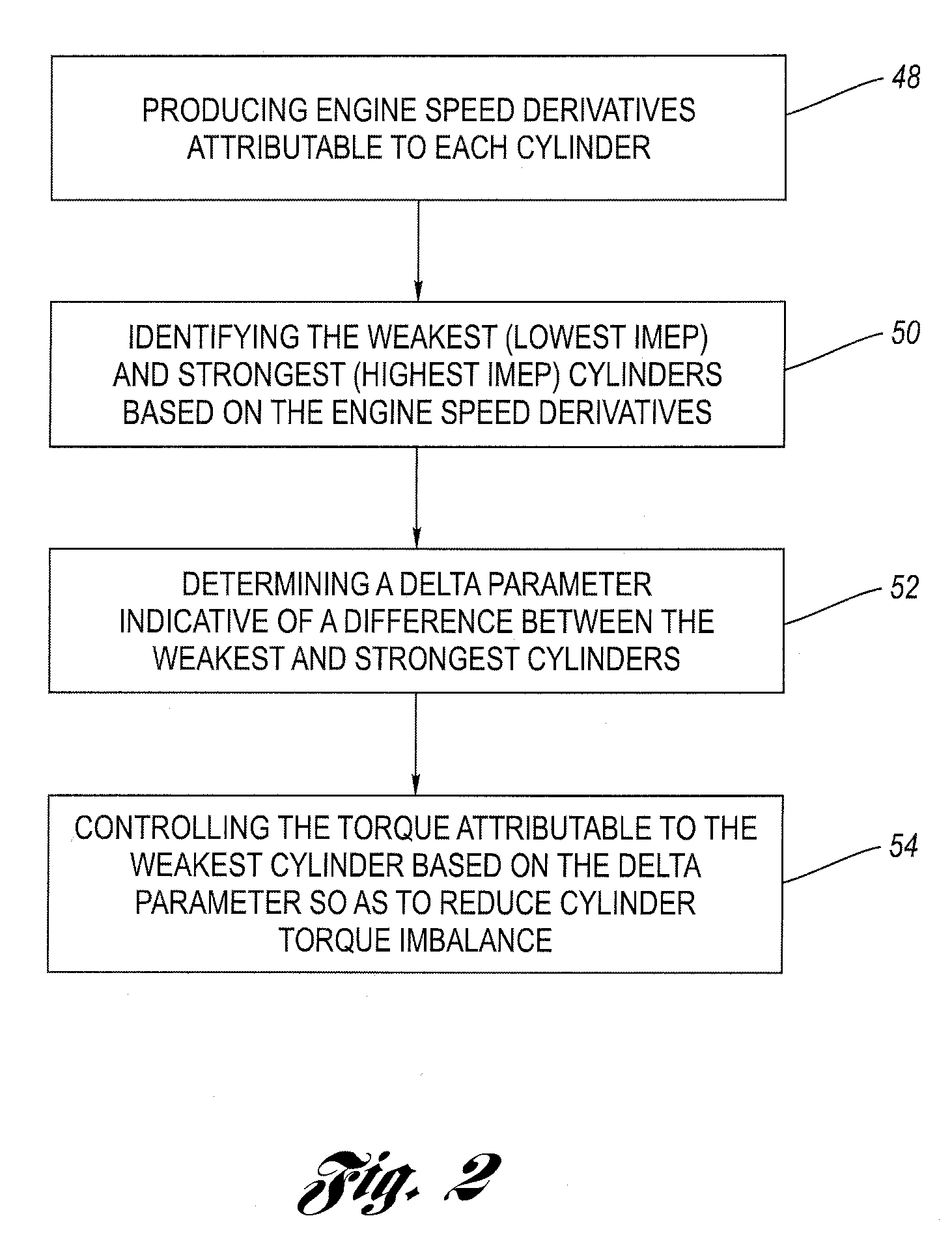Method for low and high IMEP cylinder identification for cylinder balancing
a technology of cylinder balancing and identification, applied in the direction of electrical control, process and machine control, instruments, etc., can solve the problem of uncombusted fuel entering the exhaust system, and achieve the effect of reducing the imbalance of cylinder torque and good performan
- Summary
- Abstract
- Description
- Claims
- Application Information
AI Technical Summary
Benefits of technology
Problems solved by technology
Method used
Image
Examples
Embodiment Construction
[0011]Referring now to the drawings wherein like reference numerals are used to identify identical components in the various views, FIG. 1 shows an internal combustion engine system 10 including an internal combustion engine 12 whose operation is controlled by a programmed, electronic engine control module (ECM) 14 or the like. System 10 is configured, in one embodiment, to already have available real-time engine speed derivative data by virtue of also having misfire detection capability, as known in the art. Of course, misfire detection capability is not required for purposes of the present invention.
[0012]The engine 12 includes a plurality of cylinders, illustrated in exemplary fashion as a V-type, six (6) cylinder engine where the cylinders are designated 161, 162, 163, . . . 166. In one arrangement, for example, the firing order may be designated as cylinders numbers 2-3-4-5-6-1. Of course, other numbering schemes and / or firing orders are possible. Moreover, the present inventio...
PUM
 Login to View More
Login to View More Abstract
Description
Claims
Application Information
 Login to View More
Login to View More - R&D
- Intellectual Property
- Life Sciences
- Materials
- Tech Scout
- Unparalleled Data Quality
- Higher Quality Content
- 60% Fewer Hallucinations
Browse by: Latest US Patents, China's latest patents, Technical Efficacy Thesaurus, Application Domain, Technology Topic, Popular Technical Reports.
© 2025 PatSnap. All rights reserved.Legal|Privacy policy|Modern Slavery Act Transparency Statement|Sitemap|About US| Contact US: help@patsnap.com



